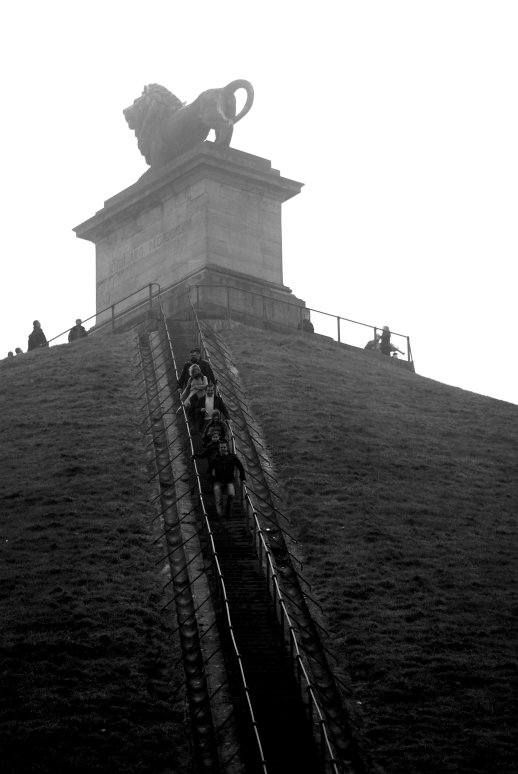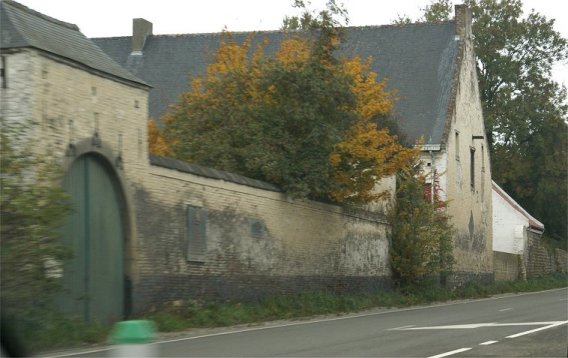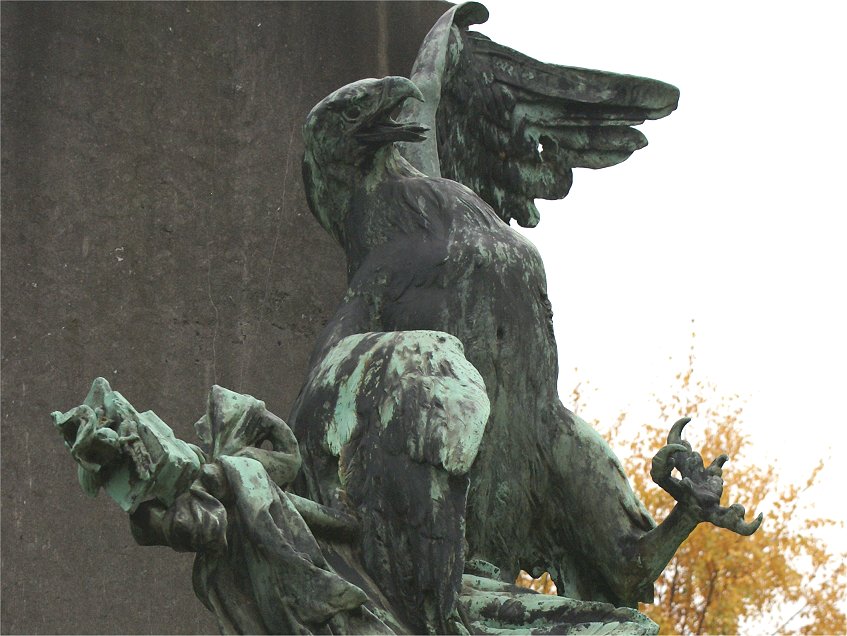If the French had expected the attack to succeed by intimidation, they were mistaken. Halkett's brigade was the first to be attacked, and the Middle Guard halted to return fire. Halkett had gone forward in front of the sunken road, and when ordered to withdraw, confusion ensued, and the small brigade fled behind the sunken road. Halkett rallied his me, and the Prince of Orange was wounded (on the site of the mound), but it was the arrival of Chasse's division of Dutch-Belgians that saved the line here.
Elsewhere, toward the right of the panorama, the French squares were advancing against Maitland's brigade of guards. At a range of about 50 yards, Wellington himself gave the order to fire. Halting to return fire rather than press the attack, the French attack stalled. When the French tried to deploy into line, the British Guards attacked with the bayonet on Wellington's order. The French square fled to the rear. Maitland, however, now faced the French squares of their second line, so the British fell back to the sunken road in some confusion. To their right, however, Adam's brigade found itself without any French to their front after repulsing the enemy skirmishers. Col. Colborne of the 52nd Regiment ordered his men forward to fire into the flank of the 4th Chasseurs. A well timed bayonet attack put the French square to flight.
The Imperial Guard had failed, and panic set in amongst the French army.





